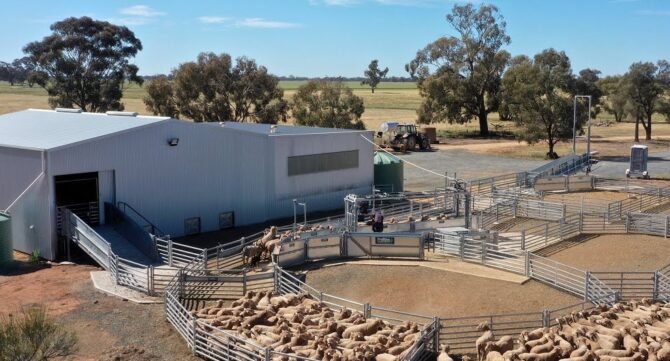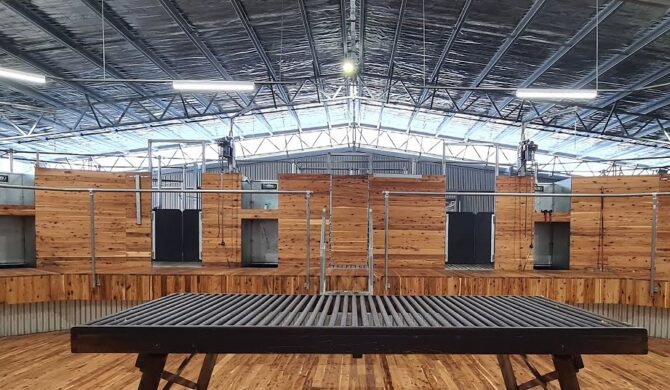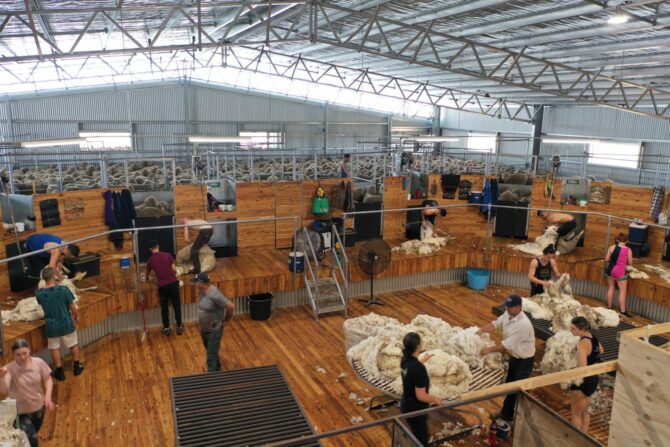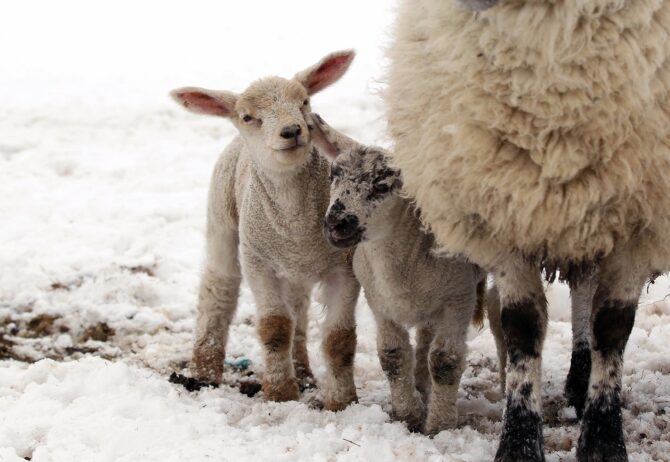Choosing the right shearing shed to purchase is a primary infrastructure decision for any sheep farmer. A well-put-together shed, which is designed properly, improves workflow, animal care, wool quality, and worker safety, all of which are key to a successful shearing operation. If you are improving an existing structure or breaking ground on a new build, it pays to know what features go into a modern functional shearing shed, which in turn will save you time, money, and frustration down the road.
Understanding the Role of a Shearing Shed

A shearing shed is also not a simple structure; it is the operational heart of the sheep farm. What you put in that design can make the process more efficient, reduce stress on the animals, and in turn create a better, safer environment for the workers. As you go to buy a shearing shed, pay attention to the practical layout and construction quality.
Modern times show that the design of today’s sheds has outgrown that of the past, which was mostly timber. Today farmers have steel in the frame, ergonomically designed shearing platforms, better ventilation systems, and even automation in the handling of the wool. These changes have brought about faster, safer, and more efficient operations, which in turn improve the yield and quality of the wool.
Factors to Consider When Choosing a Shearing Shed
Choosing out of many shearing shed options for your property is about balancing between several key factors, from farm size and flock numbers to materials used, layout, and budget. Here is what you should look at before you buy or have one built.
Farm Size and Flock Numbers
In what you are shearing a great volume of sheep that will in large part determine the design of your shed. For small-scale farms a 2-stand shed is enough. In larger operations you see multi-stand shearing, extensive catching pens, and more elaborate wool handling areas.
Small farms (up to 500 sheep): 1–2 stands, basic design, manual wool handling.
Medium farms (500–2,000 sheep): 2–4 stands of raised shearing boards, mechanized wool presses.
Large farms (2,000+ sheep): 4-star accommodations that include wool-lined rooms, hydraulic systems, and large holding pens.
Matching your farm’s produce to the size of the shed sees smoother-running shearing seasons out in the field and also reduces what would be a pain, a bottleneck.
Workflow and Efficiency
The best shearing sheds that they have seen are those that flow for sheep and which also are easy for the workers. What they find is that that which is efficient in design reduces stress on the animals and in turn speeds up each stage of the shearing, from mustering to wool pressing.
Key efficiency features to look for:
- Sheep in a straight line go from the catching pens to the shearing stands.
- Nonskid flooring to improve safety which in turn reduces animal injuries.
- Proper spacing of shearing stations to avoid crowding.
- Integrated wool handling facilities which have clean and separate from dirty areas.
- A practical workflow which also improves animal welfare and worker safety.
Building Materials and Durability

Today modern shearing sheds are built of galvanized steel, which gives them great longevity, low maintenance, and protection against rust and termites. Also, steel sheds do very well in terms of strength-to-weight ratio, which in turn allows for wide open spaces with few internal supports, which is great for open work spaces.
When evaluating materials:
When evaluating materials: During the evaluation of materials:
- Choose corrosion-resistant steel cladding and roofing.
- Choose insulated panels for temperature control.
- Consider treated wood flooring for grip and comfort.
Durable materials will reduce maintenance efforts and they will also make the shed more resistant to Australia’s ever-changing weather.
Ventilation, Lighting, and Comfort
In shearing sheds great air flow is key. Poor ventilation brings about excess heat, discomfort for workers, and stress for sheep. Also proper lighting, which is either natural or artificial, improves the shearer’s efficiency and reduces fatigue.
Checklist for comfort and safety:
- Ridge and side vents for natural air flow.
- In high-ceilinged spaces and in warm regions.
- Roof windows or clear panels.
- LED lights for energy efficiency and visibility.
These design features do great work on long shearing days.
Maintenance and Future Upgrades
A shearing shed is a big purchase. What you choose should be easy to clean, maintain, and expand, which in turn will make it a suitable choice as your flock grows.
- Smooth, washable wall linings and flooring.
- Accessible electrical and plumbing systems.
- Modular layouts that allow future extensions.
Think of investing in flexible infrastructure, which may cost more up front but will pay for itself in the long run.
The Rise of Modern Shearing Sheds for Sale
Today’s Modern shearing sheds for sale feature a blend of the old and the new. Companies like Proway Livestock Equipment Rural Building Design have transformed with their tailored solutions, which also improve productivity and animal welfare. They design modular steel sheds, which they build with precision into safe sheep flow, efficient wool handling, and durable structures for tough Australian conditions.
Farmers today have a choice of prebuilt models or fully custom-made sheds that fit into any terrain and climate and which, in turn, achieve what the farmer is looking for. They have modern structures that are very efficient as well as very much up to date with environmental and safety standards.
Common Mistakes to Avoid
When buying a shearing shed for sale, avoid these issues:
- Oversize or undersize your structure for your flock.
- Disregarding local weather or temperature.
- Neglecting ventilation and lighting design.
- At a lower cost to begin with.
- Failing to plan for future expansion.
Careful research and professional input, which in turn helps to see to it that the investment is practical and sustainable.
Final Thoughts
A well-put-together shearing shed is more so a facility that is a base for operation, as it also plays to productivity, safety, and profitability issues on the farm. As you look into purchasing a shearing shed, think in terms of the layout, materials used, and how the design will function for your particular property.
Today it is seen that which can be put to use from the trusted sources at Proway, which they have designed for farmers’ needs: durable, efficient, and purpose-built sheds. By putting in that which is right for the infrastructure today, farmers are in fact setting up their operation for successful shearing seasons and large-scale success.






